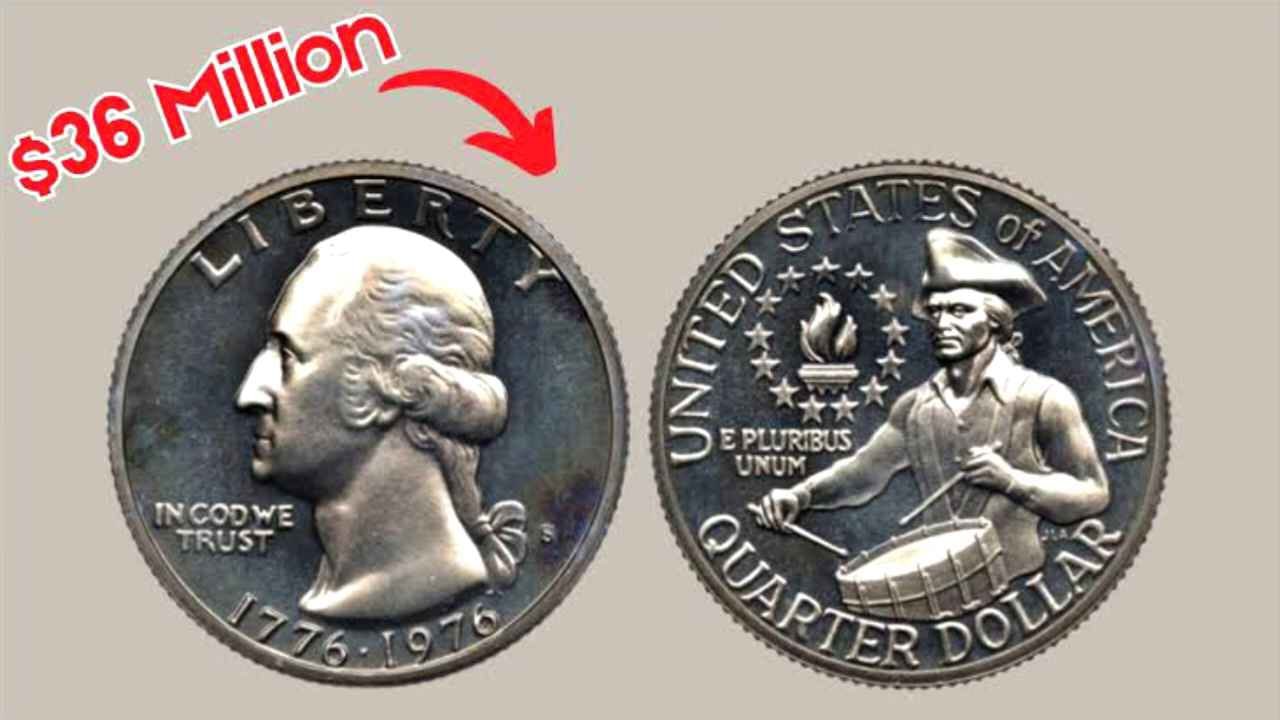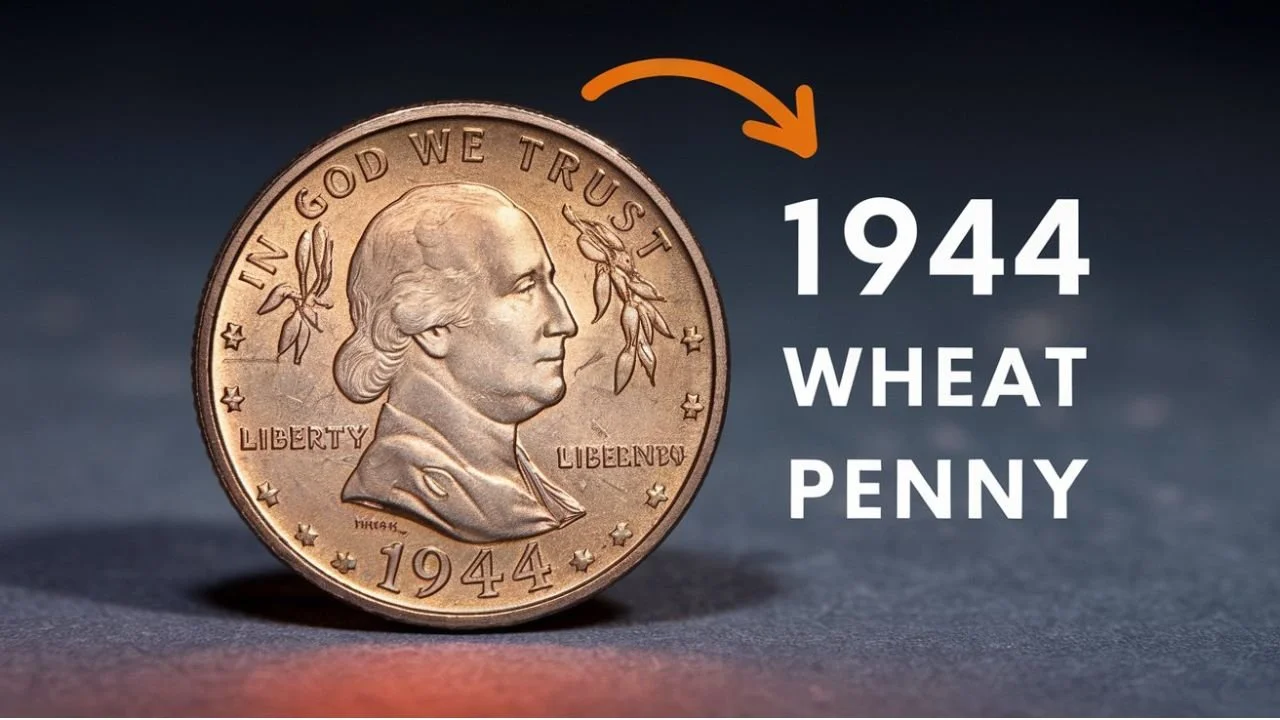Rare Bicentennial Quarter Worth About $36 million – 7 More Are Worth Over $50 million USD
It’s not every day you hear that a simple coin can be worth millions of dollars. Most of us pass coins without even thinking twice. But recently, collectors and treasure hunters are buzzing about a very rare Bicentennial Quarter that has been valued at around $36 million. Even more shocking, seven other coins—similar in appearance—are believed to be worth over $50 million each.
This surprising news has turned many people into casual coin-checkers, looking through their loose change with a new sense of excitement. But what’s so special about these quarters? Why are they worth so much money? Let’s understand the story behind them in simple words.
What is the Bicentennial Quarter?
The Bicentennial Quarter is a U.S. quarter that was specially minted in 1975 and 1976 to celebrate 200 years of American independence. Instead of the usual design, these quarters have a unique back side showing a colonial drummer and a victory torch surrounded by thirteen stars. These coins were made in large numbers, so most of them are not rare at all.
However, a very small number were minted using special methods, different metals, or with printing errors. These rare versions are the ones that could be worth millions today.
What Makes This Particular Quarter Worth $36 Million?
One of the rare Bicentennial Quarters has made headlines because of its shocking $36 million value. This isn’t just any quarter—it’s a perfect example of a collector’s dream. Here’s why:
-
It was struck using a rare combination of metals, making it different from normal quarters.
-
It was kept in perfect condition from the moment it was made, with no scratches or wear.
-
It has some small details, like a misprint or unique stamping marks, that make it one-of-a-kind.
-
It has a strong story or background, possibly linked to a special minting process or event.
Coins like this are very rare. That’s why collectors are willing to pay such a huge amount to own it.
Overview Table: Why Some Bicentennial Quarters Are Worth Millions
| Feature | Explanation |
|---|---|
| Special Metal Composition | Some were accidentally made with silver or experimental metals |
| Proof or Error Coins | Mistakes in stamping or design make them unique |
| Condition | “Mint State” or untouched coins are more valuable |
| Historical Connection | Coins tied to events or people add interest |
| Limited Mint Quantity | Only a few made in a specific style or year increases rarity |
| Certified Grading | Official grading gives confidence to collectors and boosts value |
| Collectible Demand | High interest from collectors raises the market price |
What About the Other 7 Quarters Worth Over $50 Million Each?
Apart from the $36 million Bicentennial Quarter, there are seven more quarters that have caught the attention of collectors. These coins are even rarer and have been estimated to be worth over $50 million each. While their exact details are private, here’s what we know:
-
They were likely created as test coins or “prototypes” at the mint.
-
Each one may have unique characteristics—like double stamps, off-center strikes, or unusual finishes.
-
Some may have been made in extremely limited numbers—possibly fewer than five.
-
Their condition is perfect, and they’ve been preserved like museum pieces.
These coins are usually not found in regular circulation but may be part of old collections or estate items that people forgot about. That’s why coin experts always say: “Never throw away an old coin without checking it first.”
How Can You Check If Your Quarter is Valuable?
Now, this may make you want to go digging through your old coin jar or wallet. Here’s a quick way to check if your Bicentennial Quarter might be worth something:
-
Look at the Date: Make sure it says 1776–1976 on the front.
-
Check the Back Design: A colonial drummer should appear instead of the usual eagle.
-
Look at the Edge: Some rare versions have silver content—check if it has a solid silver edge instead of a copper line.
-
Check for Errors: See if the image looks off-center, double-stamped, or unusual.
-
Condition Matters: The cleaner and shinier it looks, the more valuable it might be.
If you think you might have a special quarter, don’t try to clean it. Cleaning can actually lower its value. Instead, place it safely in a holder or small bag and have it examined by a professional coin dealer or grading company.
Why Are Coins Like These Worth So Much?
Coins are not just pieces of metal. For many, they are little time machines that carry history. Collectors are willing to pay large amounts for rare coins because:
-
They want to own a piece of history.
-
Rare coins are seen as smart investments.
-
There is only a limited supply, so demand increases.
-
The stories behind them are often fascinating.
Just like rare paintings or stamps, rare coins hold a unique place in the world of collecting.
What Should You Do If You Find One?
If you ever come across a Bicentennial Quarter that looks different or special, here’s what you should do:
-
Do Not Spend It – It could be worth a fortune.
-
Store It Safely – Keep it away from heat, moisture, or rough handling.
-
Get a Second Opinion – Show it to a trusted coin expert.
-
Get It Graded – Send it to a certified coin grading service.
-
Decide What to Do – You can sell it at auction, hold onto it as an investment, or even donate it to a museum.
Conclusion
A coin worth just 25 cents might seem unimportant, but sometimes it holds hidden value that can change your life. The story of the $36 million Bicentennial Quarter and seven others worth over $50 million each reminds us to look closely at the little things. That old coin in your drawer might be more than just spare change—it could be a rare treasure waiting to be discovered.
So next time you find a Bicentennial Quarter, don’t toss it aside. Take a moment. It could be the most valuable thing you own.
FAQs
Q1. Are all Bicentennial Quarters valuable?
No, most Bicentennial Quarters are very common and only worth face value. Only rare versions with errors or special materials are valuable.
Q2. How do I know if my quarter has silver in it?
Check the edge of the coin. If it looks solid silver (no copper line), it may have silver content. You can also weigh it or ask an expert.
Q3. What is a “proof coin”?
Proof coins are special coins made for collectors using a high-quality minting process. They have a shiny, mirror-like finish and are usually more valuable.
Q4. Where can I get my coin checked?
You can visit a local coin shop, attend a coin show, or send it to a grading service like PCGS or NGC for professional evaluation.
Q5. Can these valuable quarters still be found in circulation?
It’s rare but possible. Most of them are in private collections, but there’s always a small chance that one slipped into everyday use.




